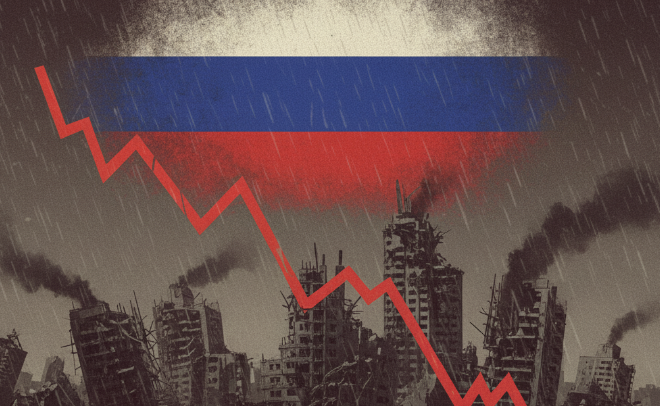
In a striking and characteristically direct message posted on Truth Social on September 23, 2025, U.S. President Donald J. Trump has issued what many are calling a pivotal declaration on the ongoing Russia-Ukraine conflict. His statement, blending encouragement for Ukraine with a pragmatic shift in American policy, signals a potential rebalancing of U.S. involvement in the war.
Trump wrote:
“Putin and Russia are in BIG Economic trouble, and this is the time for Ukraine to act. In any event, I wish both Countries well. We will continue to supply weapons to NATO for NATO to do what they want with them. Good luck to all!” – PRESIDENT DONALD J. TRUMP
The post has already surpassed 5 million views on Truth Social and sparked intense debates across political, diplomatic, and defense circles. For Ukraine, Trump’s words are seen as a rallying cry; for Russia, they are dismissed as empty rhetoric; and for NATO, they underline Washington’s continued commitment, albeit under a different model of burden-sharing.
The Spark: Trump’s Remarks and Immediate Backlash
Trump’s Truth Social post was part of a longer thread in which he claimed to have a “full understanding” of the conflict after months in office. He credited Ukraine’s “great spirit” and the European Union’s support for positioning Kyiv to reclaim “all of Ukraine back in its original form—and maybe even further.” This marks a noticeable departure from his campaign trail promise to “end the war in 24 hours.”
Reactions followed swiftly. Ukrainian President Volodymyr Zelenskyy called it a “productive signal,” tweeting: “America’s strength bolsters our resolve. With NATO’s help, we’ll win back every inch.” In Moscow, Kremlin spokesman Dmitry Peskov dismissed the remarks as “empty bluster,” insisting Russia’s economy remains “resilient and growing.” NATO Secretary General Mark Rutte welcomed the message, saying it reflects the alliance’s emphasis on burden-sharing. Within the United States, Democrats like Senate Majority Leader Chuck Schumer accused Trump of “abdicating leadership,” while Republican hawks praised his approach as “smart diplomacy.”
The online debate has been equally intense, with some interpreting Trump’s words as a strategic U.S. exit from direct involvement, and others seeing it as a subtle green light for Ukraine to intensify its offensives.
Russia’s Economic “BIG Trouble”: By the Numbers
Trump’s claim that Russia is in “BIG Economic trouble” is reinforced by a growing body of economic data. After two years of strong growth—4.1% in 2023 and 4.3% in 2024—the Russian economy is now showing clear signs of strain.
GDP Growth: From 4.3% in 2024 to just 0.9%–1.5% projected in 2025, with the IMF slashing earlier expectations of 2.5%. War spending, which makes up 40% of the budget, has crowded out civilian industries.
Inflation: Around 7% in 2024, now projected at 4%–6% for 2025. The Central Bank’s interest rate of 18% to control prices has stifled lending and investment.
Oil Export Revenue: Stable in 2024, but down to five-year lows by August 2025. Ukrainian strikes on refineries and sanctions have caused a 24% drop in oil and gas tax revenues year-on-year.
Budget Deficit: From 1.7% of GDP in 2024 to over 2% in 2025. Defense spending now eats up more than 20% of GDP, while the National Wealth Fund continues to deplete.
Unemployment: Rising from 3% in 2024 as labor shortages linked to mobilization take their toll.
Analysts from institutions such as the IMF, Reuters, and Chatham House warn of looming stagflation, where slow growth combines with persistent inflation. Russian President Vladimir Putin downplayed the risks on September 18, calling recession “far away,” but Sberbank CEO German Gref warned of “clear signs” of stagnation by late 2025. Ukraine’s targeted strikes on oil infrastructure have worsened the situation, slashing Russia’s current account surplus by 40% in the first half of 2025. U.S. Treasury Secretary Scott Bessent summed it up as a “race” between Ukraine’s endurance and Russia’s economic collapse.
U.S. Weapons to NATO: The New Playbook
Perhaps the most significant part of Trump’s statement was his emphasis on supplying weapons to NATO rather than directly funding Ukraine. This approach, while keeping America’s defense industry active, shifts much of the financial burden to European allies.
The framework for this approach lies in the NATO Prioritised Ukraine Requirements List (PURL), launched in July 2025. Under this program, NATO members purchase U.S.-made arms, which are then redirected to Kyiv.
First deliveries under this scheme began on September 18, with Patriot missiles and HIMARS ammunition arriving in Ukraine, funded primarily by the Netherlands with more than $500 million.
Sweden, Norway, and Denmark have pledged a combined $1 billion, with more contributions expected soon.
NATO aims to deliver $10 billion in arms through PURL by the end of 2025, focusing heavily on air defense and artillery ammunition.
This model keeps American manufacturing strong while ensuring Europe shoulders the bulk of financial responsibility. Since 2022, total U.S. assistance has exceeded $134 billion, including 201 howitzers, 18 air defense systems, and 41 HIMARS launchers. Under Trump’s current framework, no direct U.S. taxpayer funds have been allocated since March 2025, though arms sales worth over $1 billion to allies for Ukraine’s benefit have been authorized.
What Does “Time for Ukraine to Act” Mean?
Trump’s statement that “this is the time for Ukraine to act” reflects both opportunity and urgency. With Russia’s economy under immense strain and NATO aid accelerating, Kyiv may feel emboldened to intensify its counteroffensives, including deeper strikes into Russian territory.
At the same time, Trump’s “good luck” sign-off reveals a note of caution. After peace talks in Jeddah collapsed in March, Trump appears to prefer a diplomatic solution while keeping U.S. involvement indirect. His approach underscores a broader philosophy of promoting American industrial gains while reducing the direct costs of war.
Markets have already responded to the potential escalation. Oil prices fell by 2% following Trump’s post, reflecting investor concerns about supply risks and instability.
For Ukraine, the statement is encouragement to press forward; for Russia, it is a sign of mounting pressure; and for NATO, it represents a new model of collective burden-sharing. Whether this moment catalyzes peace or intensifies the conflict remains to be seen.
Conclusion
Trump’s latest Truth Social message is more than a casual post—it is a marker of shifting U.S. strategy in the Russia-Ukraine conflict. By emphasizing NATO responsibility, underlining Russia’s economic fragility, and encouraging Ukraine to act, Trump has added a new layer of uncertainty and urgency to an already volatile situation. As the war enters its next phase, global leaders, markets, and ordinary citizens alike will be watching closely for what comes next.
Disclaimer:
This article is based on publicly available reports, official statements, and expert analyses. It is intended for informational purposes only and should not be considered as financial, political, or strategic advice. Readers are encouraged to consult multiple sources for a comprehensive understanding of the topic.




